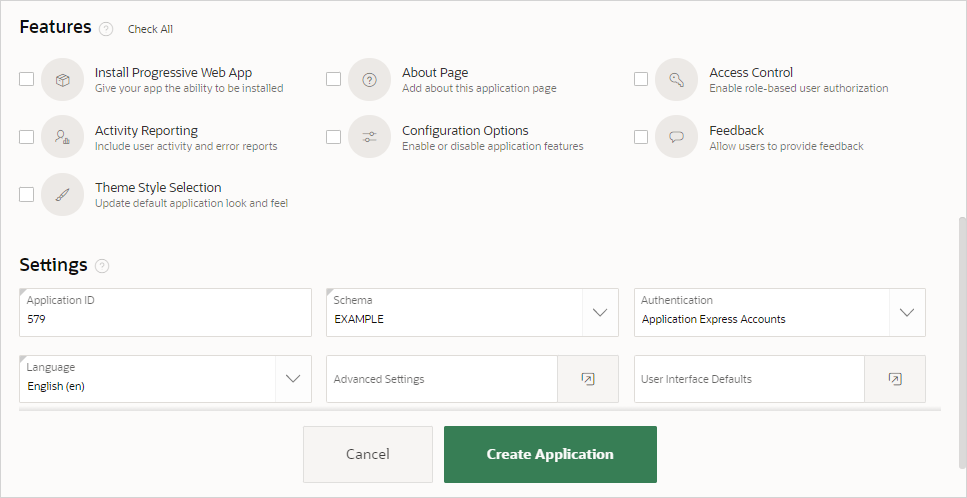5.6.3 Creating a Progressive Web Application (PWA)
Learn about Progressive Web (PWA) app features and requirements.
- About Progressive Web App Support
Progressive Web Applications (PWA) are designed to be fast, responsive, installable to a home screen, reliable (online or offline), and engaging (providing support for push notifications). - Creating a Progressive Web App
Create a Progressive Web App by running the Create Application Wizard and enabling the Install Progressive Web App feature. - Configuring Progressive Web App Attributes
Configure Progressive Web App attributes by editing the Application Definition.
Parent topic: Creating Applications for Mobile Devices
5.6.3.1 About Progressive Web App Support
Progressive Web Applications (PWA) are designed to be fast, responsive, installable to a home screen, reliable (online or offline), and engaging (providing support for push notifications).
To enable Progressive Web App, an Oracle APEX application must be served over a secured HTTPS environment, or localhost. If using an unsecured environment, PWA features will not be rendered
You create a Progressive Web App by running the Create Application Wizard and enabling the Install Progressive Web App feature.
Enabling Install Progressive Web App:
-
Adds the ability to install the app as a Progressive Web App (PWA).
-
Within the application, adds a new navigation bar entry,
Install App -
Provides a customizable offline page when users are offline and cannot request the network. See Progressive Web App (PWA) Messages Requiring Translation.
-
Optimizes page loading speed on the mobile device. Improves page load rendering time with a new browser cache architecture for static files (APEX core files and app files).
Parent topic: Creating a Progressive Web Application (PWA)
5.6.3.2 Creating a Progressive Web App
Create a Progressive Web App by running the Create Application Wizard and enabling the Install Progressive Web App feature.
Tip:
To include mobile friendly reports and forms, create your application and then add pages to it. See Reports and Forms Optimized for Mobile Environments.
To create a Progressive Web App:
Parent topic: Creating a Progressive Web Application (PWA)
5.6.3.3 Configuring Progressive Web App Attributes
Configure Progressive Web App attributes by editing the Application Definition.
Note:
Prior to configuring Progressive Web App attributes, create a new application by running the Create Application Wizard and enabling the Install Progressive Web App feature as described in the previous topic.To configure Progressive Web App attributes:
- On the Workspace home page, click the App Builder icon.
- Select an application.
- Navigate to the Edit Application Definition page. From the Application home
page, you can access the Edit Application Definition page in two ways:
- From Shared Components:
-
Click Shared Components.
-
Under Appliction Logis, click Application Definition Attributes.
-
- Use the Edit Application Properties
button:
-
Click Edit Application Properties to the right of the application name.
-
Click the Definition tab (if not already selected).
-
- From Shared Components:
- Edit the attributes under Progressive Web App:
- Click Apply Changes.
Parent topic: Creating a Progressive Web Application (PWA)

